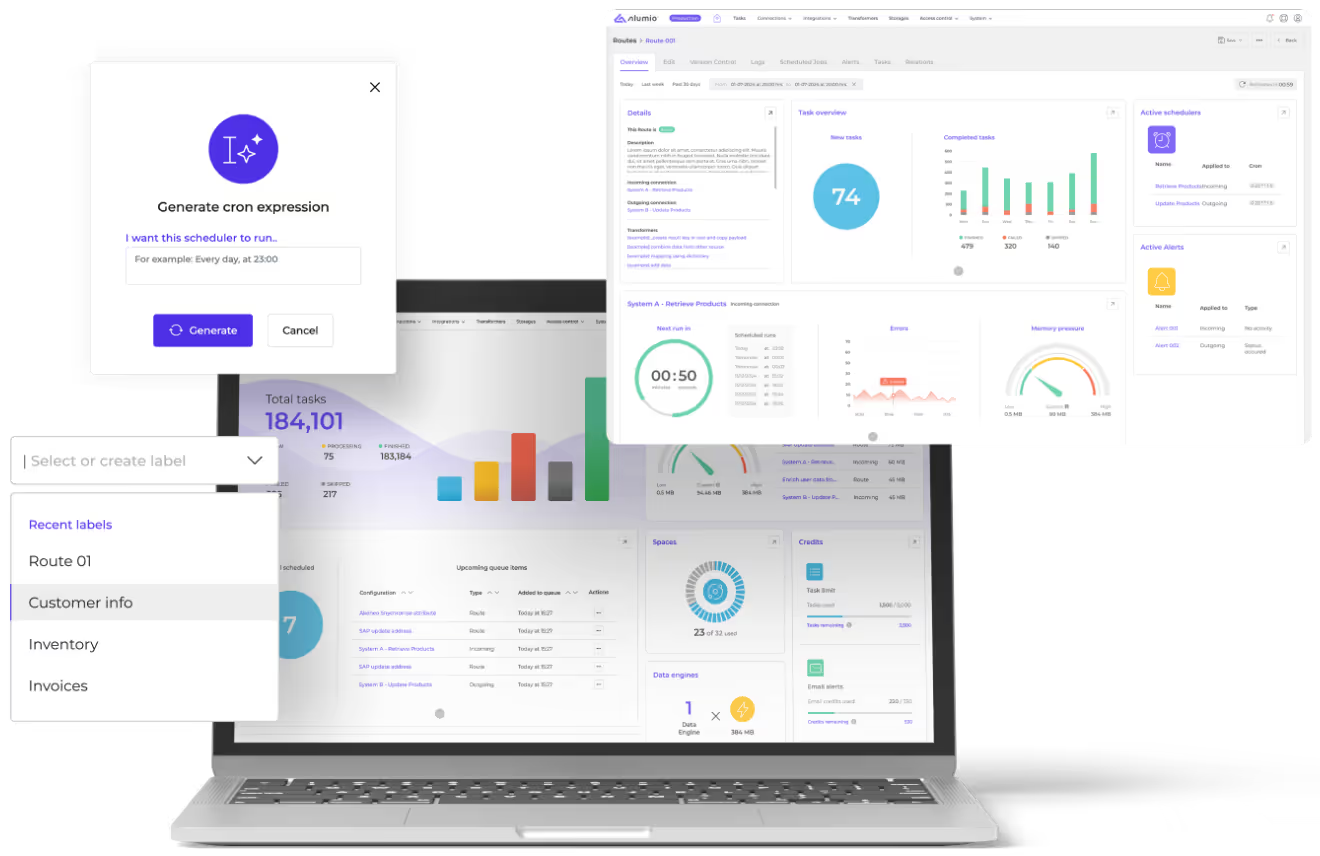What is marketing automation?
Marketing automation is all about working smarter with the help of software. Instead of manually sending emails or tracking leads, automation tools handle these tasks for you, triggering personalized messages like emails, texts, or ads based on how customers behave. It also helps you score and segment leads, so you're always targeting the right people at the right time. Behind the scenes, it connects your CRM, CMS, CDP, e-commerce platform, and analytics tools, enabling smooth workflows and real-time performance tracking. The result? More efficient campaigns, better insights, and a faster path from lead to loyal customer.
Discover our picks for top 10 marketing automation platforms in 2025 here.
Marketing automation use cases
Some of the most common marketing automation use cases include the following:
- Abandoned cart email flows
Automatically send targeted emails to shoppers who added products to their cart but didn’t complete checkout, reminding them of what they left behind and often including a personalized incentive to return and buy. - Post-purchase follow-ups
Trigger a series of automated messages after a customer completes a purchase, thanking them, sharing order details, suggesting related products, or asking for a review to build trust and encourage repeat business. - Lead nurturing sequences
Deliver a timed sequence of personalized emails to new leads based on their interests, actions, or stage in the funnel, helping guide them from awareness to decision without manual effort from your team. - Cross-sell and upsell automation
Use purchase history and customer behavior to recommend complementary or higher-value products via email, SMS, or on-site banners, boosting average order value and customer lifetime value. - Loyalty program triggers
Automatically notify customers when they earn points, unlock a new tier, or qualify for a reward, keeping them engaged and encouraging ongoing participation in your loyalty program. - Behavioral targeting based on website or in-app actions
Track how users interact with your site or app through viewed products, clicked content, time on page, etc. and trigger personalized messages or experiences in response, delivering relevance at the perfect moment.
The challenge: Disconnected systems lead to broken automation
Marketing automation platforms like HubSpot, Marketo, or Act-on are powerful, but only when they’re integrated with the rest of your tech stack.
Without seamless data flow between systems, your marketing automation efforts hit a wall. Some real-world blockers include:
- Fragmented customer profiles: Your CRM holds basic data, your e-commerce platform has order history, and your CDP tracks behavioral data, but none of it syncs.
- Manual data syncs: Marketing teams waste hours importing/exporting lists or fixing CSV errors.
- Delayed triggers: Customer actions aren't captured in real time, leading to missed opportunities and generic experiences.
- Limited scalability: Every new tool or channel requires custom code or costly middleware.
This is where an iPaaS like Alumio changes the game.
What is an iPaaS and why does it matter for marketing automation?
An iPaaS (Integration Platform as a Service) is a cloud-based solution that enables you to connect, transform, and automate data flows between multiple applications, without custom code.
Think of it as the middleware layer that ensures your marketing platforms, CRMs, e-commerce tools, CDPs, ERPs, and analytics platforms work together as one synchronized ecosystem.
The Alumio iPaaS can empower marketing automation by unifying customer data across systems in real time, triggering workflows based on custom events or business logic, keeping integrations flexible and future-proof, and eliminating the need for manual syncs or brittle point-to-point connections.
Learn more about the Alumio iPaaS and how it works here.
How Alumio enables better marketing automation: A technical breakdown
1. Real-time data synchronization
With Alumio, you can instantly sync customer data between systems. For example:
- A new Shopify order automatically updates a lead’s lifecycle stage in HubSpot
- A contact’s behavioral data from your web analytics platform updates their profile in your CDP
- Loyalty points earned in your POS system trigger an SMS reward via Klaviyo
How it works technically:
- Alumio listens for webhook events (order placed, cart abandoned, lead submitted, etc.)
- Transforms the incoming data into the correct format
- Sends it to one or more target systems using APIs or file-based protocols (JSON, XML, CSV, etc.)
2. Event-driven automation
You can define precise business rules in Alumio that act as event-based triggers. For instance:
- IF customer places order > €200 AND is a loyalty member → THEN tag in CRM + send custom email via marketing tool
- IF cart is abandoned AND customer is a first-time visitor → THEN push to ad platform for retargeting
Alumio enables these conditional automations without needing hardcoded logic, just visual flow builders and configurable mappings.
3. Bidirectional syncs across systems
Alumio supports two-way integrations to ensure your automation tools always have the latest data. For example:
- A customer unsubscribes from an email → Alumio updates the status in your CRM, ERP, and CDP
- A sales rep changes a lead score → Alumio informs your marketing automation platform to adjust campaign eligibility
4. Data enrichment and transformation
Alumio not only connects data; it cleanses, enriches, and transforms it. This means:
- Merging fragmented data into unified customer profiles
- Standardizing date formats, product names, or language codes
- Removing duplicates and validating emails or phone numbers
This ensures that your automations don’t just run; they run with clean, usable, and consistent data.
5. Scalability without technical bottlenecks
Alumio’s user-friendly interface lets business users configure integrations with minimal IT support. Developers can build custom connectors when needed, but most workflows can be designed using visual tools and prebuilt templates. This flexibility allows marketing teams to iterate quickly, without being blocked by long IT queues.
The business impact of using Alumio to enable marketing automation
When you combine powerful marketing automation tools with a flexible iPaaS like Alumio, you unlock:
- Faster campaign execution (go from idea to launch in days, not weeks)
- Higher conversion rates (thanks to real-time, personalized messaging)
- Reduced manual work (free up your team for strategy, not spreadsheet juggling)
- Improved data quality (eliminate sync errors and list mismatches)
- Future-proof architecture (easily add new tools or migrate systems without disrupting automations)
Ready to build an automated marketing engine?
Marketing automation without integration is like a Ferrari without fuel. Alumio gives your automation tools the data and connectivity they need to truly perform. Want to automate smarter, not harder?
Let’s talk about how Alumio can help you orchestrate seamless, data-driven marketing journeys across all your platforms.
Book a free demo today and discover what’s possible when your data and marketing tools finally work together.

























